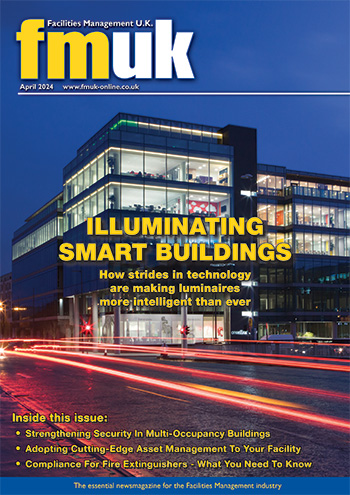Building Offices Of The Future
 Mark Grayston, Head of the Product Marketing Department at Mitsubishi Electric
Mark Grayston, Head of the Product Marketing Department at Mitsubishi Electric
The pandemic has had a profound impact on the way we live our lives over the past months and has affected how we approach and behave in certain situations – from shopping and socialising to how we work.
While some of these may be short-term changes that will gradually taper off over the next few months, the pandemic will also have lasting effects in other more foundational and profound ways.
For example, after months of working from hastily constructed home offices, there are signs that a return to formal office environments is on the cards. But the way these offices function will likely be nothing like the offices we remember – and offices of the future may also be built and designed in new ways in order to accommodate for new requirements.
Ongoing Concerns
With ongoing concerns about the transmission of the virus spiking again were we all to immediately return to pre-lockdown office conditions, reverting to offices operating in the ways of old is simply not feasible, and a number of measures must be put in place.
Lots of offices will be urgently putting up partitions, installing hand sanitizer stations and denoting one-way systems as an immediate response to accommodate returning employees, but this may not be the only change to built environments that we see.
Beyond that, there is also a wider feeling among architects, designers and businesses that offices should be fundamentally designed to weather future eventualities. With that in mind, we explore some of the key considerations for building tomorrow’s offices.
Putting Hygiene At The Heart
Undoubtedly any future office design will need to put hygiene at its heart. With the pandemic making employees hyperaware of health risks, the setup of the office will have to allay their fears and give employees confidence that the office is a safe place to return too if we’re to see a rebound in staff presence.
In the long-term, this might mean designing offices in a similar way to hospitals – using materials that can withstand heavy, regular cleaning with caustic products, for example. Spaces could also feature more sinks around the office to encourage handwashing, rather than just temporary sanitiser stations, or more direct routes and one-way systems planned through the office to decrease the time spent walking around away from the desk.
The Contactless Office
This focus on hygiene and maintaining a sterilised environment could also lead to the rise of the ‘contactless’ office.
Rather than using communal buttons to open doors, for example, designers may look to use smartphone technology or apps – this could even be used for the likes of communal coffee machines or summoning elevators.
By extension, meeting rooms could be fitted with voice activated technology to turn on lights and screens, and office toilets could be provisioned with sensors to avoid staff having to manually flush or touch the taps.
While this may sound like a big technological step, the rise of the Internet of Things in recent years has made the technology required to carry out these sorts of functions commonplace, meaning these wouldn’t necessarily be prohibitively expensive additions for most organisations to embrace.
Moving Away From Open Plan
While open plan office design has been in vogue over the last few years, promising greater collaboration between teams, the pandemic may signal a shift away from designing open, communal spaces as they make social distancing more difficult to adhere to.
In addition, many companies may adopt a far more flexible approach to office attendance in the coming years, and see less employees physically travelling into offices on a daily basis. As a result, organisations may look towards smaller office spaces and hubs, rather than big open plan floors, and alternate working patterns.
The Importance Of Air Quality
Among the various things to come out of the last few weeks, the pandemic has undeniably put indoor air quality under a microscope.
At the start of April, REHVA (Federation of European Heating, Ventilation and Air Conditioning Association) offered guidance on operating and using building services to impede the spread of the coronavirus. The key message is to supply buildings with as much outside air as possible and to avoid recirculation.
This is a key consideration for those designing offices in the aftermath of the pandemic. Hospitals are designed with effective ventilation at the core – going forward, office environments will likely need to work in a similar way.
What is also important to consider though when looking for effective ventilation, is finding a system that can introduce the much needed fresh air from the outside, without simply ‘throwing away’ all the heated or cooled air from the inside.
This is where Mechanical Ventilation with Heat Recovery (MVHR) systems come into their own as the best can recover up to 80% of the heating or cooling from the outgoing air and safely transfer it to the incoming fresh air, significantly reducing the energy needed to bring it to the temperature required.
We recently created an animated infographic explaining the importance of indoor air quality in professional environments.
Naturally, the way we think about office design in the future will be informed by what we know about the virus and as time goes by, there will continue to be more to learn and respond to - the world’s scientists are still yet to truly understand it.
Regardless of what we may learn in the months and years ahead, it’s clear that lockdown has had a profound effect on the wants and needs of staff and businesses. Going forward, the office will need to reflect all of these disparate elements to ensure that employees are happy, healthy and confident in their return to the office.


























































